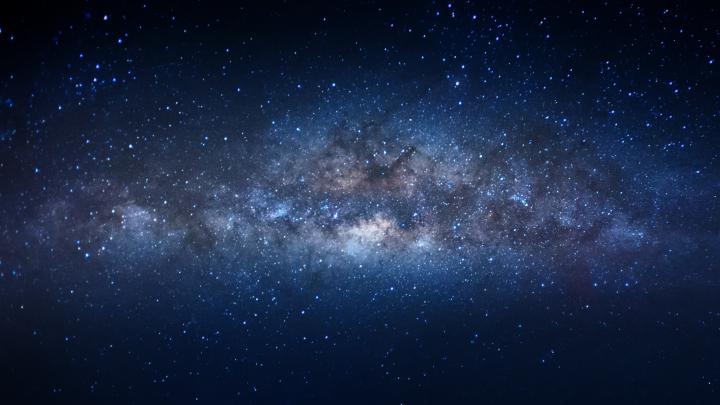Kraków/ The first data from the CREDO particle detector presented
 With the CREDO Detector app, any smartphone with a camera can become part of the largest particle detector in history. Source: Institute of Nuclear Physics PAS
With the CREDO Detector app, any smartphone with a camera can become part of the largest particle detector in history. Source: Institute of Nuclear Physics PAS
The first data with scientific value collected by smartphones of participants of the international CREDO project has been presented in the Institute of Nuclear Physics of the Polish Academy of Sciences in Kraków. The smartphones form a global detector of cosmic ray particles.
The data were presented during CREDO Week 2018 at the Institute of Nuclear Physics PAS - a week-long series of lectures, workshops and meetings of scientists and enthusiasts involved in the construction of the Cosmic Ray Extremely Distributed Observatory (CREDO).
The first subgroup of CREDO detectors are smartphones with the CREDO Detector application for Android. It transforms smartphones all over the world into a single research device with unique detection capabilities. According to the Institute of Nuclear Physics PAS, the dispersed CREDO infrastructure has matured to the point where it is possible to start reliable observations.
"Contemporary science faces challenges of exceptional technical complexity. With the costs of building accelerators and detectors reaching billions of euro, and construction time counted in decades, every alternative, well-thought-out project is worth attention" - says the director of the Institute of Nuclear Physics PAS, Prof. Marek Jeżabek. "Therefore, together with our partners, we have become involved in the creation of CREDO: a project that is not only cheap and relatively easy to implement, but above all, with social commitment, capable of providing exceptional data on the most fundamental aspects of our physical reality" - he adds.
The CREDO Detector application is developed as part of an international initiative initiated and coordinated by scientists from the Institute of Nuclear Physics PAS. Cracow University of Technology supervises maintenance and development of the app, while the Academic Computer Center Cyfronet of the AGH University of Science and Technology in Kraków is responsible for collecting and processing data. The project is co-financed by the governments of the Czech Republic, Hungary, Poland and Slovakia through the Visegrad Grants program as part of the International Visegrad Fund (IVF).
"Several thousand users participated in previous CREDO tests. The data and graphs presented today are the result of the involvement of several hundred science enthusiasts from around 20 countries. The more of us there are, the greater the chance for valuable discoveries" - says the CREDO project leader, Dr. Piotr Homola from the Institute of Nuclear Physics PAS.
Measurements with smartphones consist in registering particles and comparing particle detection times. It is now assumed that high-energy particles from space reach the Earth randomly and relatively evenly from all directions. But in 1983, a network of cosmic ray detectors observed 32 cases of so-called large atmospheric showers over Manitoba - cascades of secondary particles, initiated by high-energy cosmic rays interacting with the Earth`s atmosphere. According to the Institute of Nuclear Physics PAS, it was a very clear deviation from the expected number of detections - only one atmospheric shower was expected.
Quantum Gravity Previewer searches for similar deviations. The experiment is currently carried out by CREDO. The deviations are to be detected with smartphones in various places on Earth.
According to the Institute of Nuclear Physics PAS release, capturing the correlation between events recorded by various detectors (including smartphones) would allow to obtain new information not only about events involving extremely energetic particles of ordinary matter, but perhaps also about the properties of dark matter particles, quantum nature of gravity, and potentially even about the deepest structure of space-time itself.
"The graphs presented today are based on raw data" - notes Dr. Homola and adds that we will have to wait for groundbreaking conclusions. "This is what the whole philosophy of the CREDO project is all about - we are not a science factory that provides the public with finished, complete results. We are doing live science, in front of the users. What`s more, they can actively participate in this process and even conduct their own analyses with the latest data" - he adds.
According to the authors of the project, the CREDO project software - including the CREDO Detector application - will be made available to everyone on MIT license. This means that it can be developed and used in other scientific, school and even commercial projects.
PAP - Science in Poland
kflo/ agt/ kap/
tr. RL
Przed dodaniem komentarza prosimy o zapoznanie z Regulaminem forum serwisu Nauka w Polsce.
















